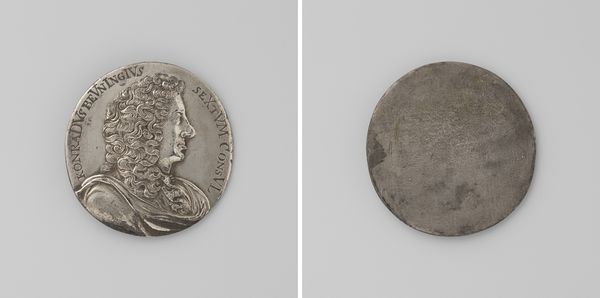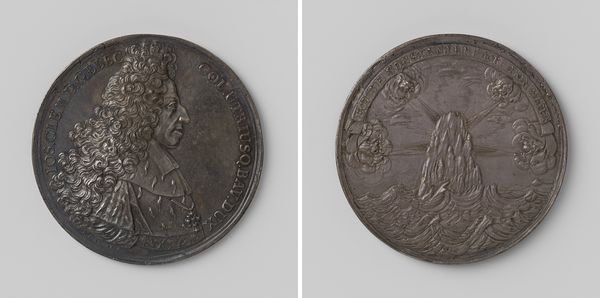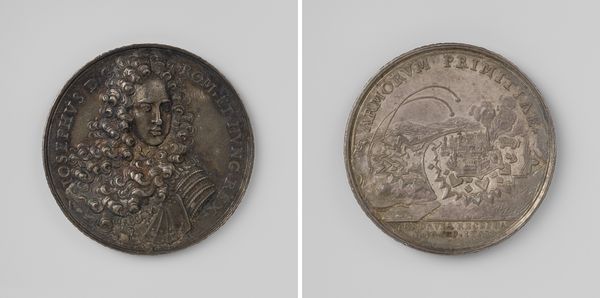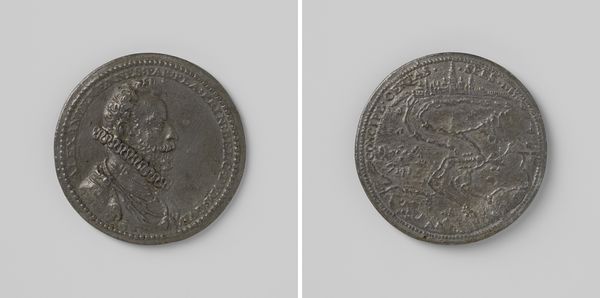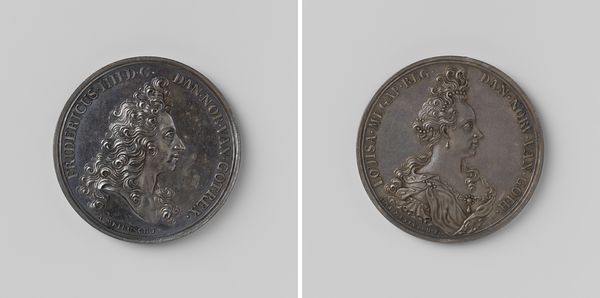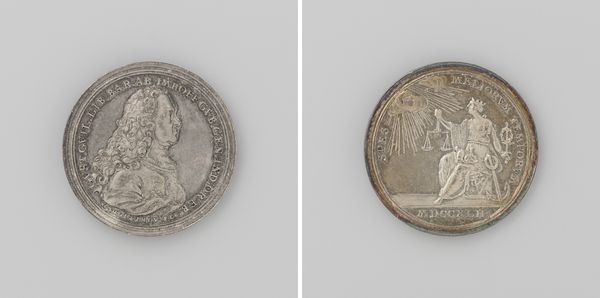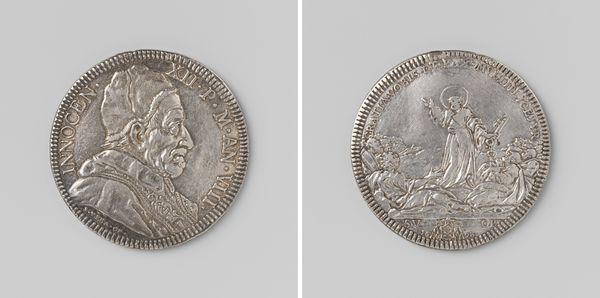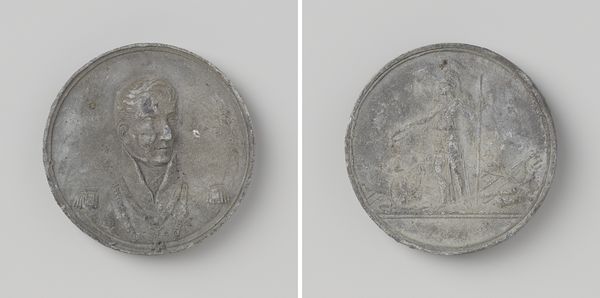
metal, relief, sculpture, engraving
#
portrait
#
baroque
#
metal
#
relief
#
sculpture
#
history-painting
#
engraving
Dimensions: diameter 6.2 cm, weight 48.78 gr
Copyright: Rijks Museum: Open Domain
Editor: This intriguing metal piece, titled "Grave door prins Willem III ingenomen" and created in 1674 by Roelof Hensbergen, seems to commemorate a historical event, perhaps a victory. The detailed portrait contrasts with the rather faint image on the back. How do you interpret this work, especially considering the symbolism inherent in medals? Curator: Indeed, this is a fascinating example of how medals served as powerful vehicles for cultural memory. The portrait of Prince William III, with its Baroque flamboyance – the flowing wig, the elaborate attire – speaks to the power and status he held. Look closely at the inscription around the portrait; those words carry weight, legitimizing his actions and framing his legacy. Editor: It almost feels like propaganda, a carefully crafted image. Curator: Precisely! Medals are rarely neutral. What event do you think the reverse depicts? Editor: I can make out figures and architecture, but it's too vague to say for sure. Is that a grave they have captured? Curator: The imagery likely refers to a specific military conquest, linking William III to a lineage of successful leaders. The 'grave door' might symbolize overcoming death and enshrining William’s own legacy. What emotional response does the contrast between the portrait and the event evoke? Editor: The portrait is idealized and immediate; the scene on the reverse feels distant and faded. It emphasizes the power of the individual over the historical context. The power of personality is preserved and triumphs. Curator: An excellent observation. It highlights how carefully constructed symbols solidify cultural narratives and individual importance within historical memory. Editor: This has revealed how visual symbols encode memory. I’ll never look at medals the same way.
Comments
No comments
Be the first to comment and join the conversation on the ultimate creative platform.
